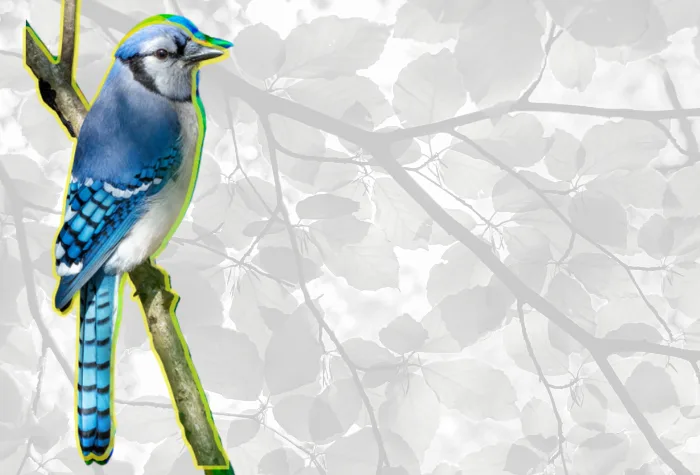
The colour blue is elusive in nature. Here's why
Blue: It isn't as common as you think.
When you take the sky and the ocean out of the equation, blue is surprisingly rare in nature.
Less than one in ten plants have blue flowers, and it isn't common in animals, either.
One reason is that true blue colours or pigments simply don't exist in nature, and plants and animals have to perform tricks to appear blue, according to the University of Adelaide.
Take blue jays for example, which only appear blue due to the structure of their feathers, which distort the reflection of light.
We see bright flashes of blue in their feathers due to a trick called "scattering," which is similar to how a prism works. Blue jay wings contain small air pockets that match the wavelength of blue light. When light hits the feathers, all colours pass through them except for blue, which is reflected.
If you were to take a blue jay feather and grind it up or place it on a white, lit surface, it would look brown. You won't find any blue in a ground-up peacock feather, either.

Graphic created by Cheryl Santa Maria for The Weather Network. Blue Jay image courtesy: Rhododendrites/Wikipedia CC BY-SA 4.0
SEE ALSO: How 'blue spaces' can benefit mind and body
Plants can mix naturally occurring pigments to appear blue, mainly red pigments called anthocyanins.
"These alterations, combined with reflected light, can create some spectacular results: delphinums, plumbago, bluebells, hydrangeas, dayflowers, morning glories, and cornflowers," Sam Le Gallou writes for the University of Adelaide.
"Although blue flowers are rare in plants, almost no plant has blue leaves – except a handful of pladelphiniumson the floor of tropical rainforests. The main reason for this has to do with the physics of light. Pigments appear the colour of the light they don’t absorb, but instead reflect. The most common plant pigment is green chlorophyll, so plants appear green because chlorophyll doesn’t absorb, but rather reflects, green light. Plants however like blue light as it has more energy than any other light in the visible spectrum."
Another reason we don't see a lot of blue in nature relates to the limitations of the human eye.
Studies suggest that from a bee's point of view, blue flowers are more common.
"Humans see light in wavelengths from approximately 390 to 750 nanometers (nm). These wavelengths represent the spectrum of colours we can see," writes Matt Shipman for NC State University News.
"Bees, like many insects, see from approximately 300 to 650 nm. That means they can’t see the color red, but they can see in the ultraviolet spectrum (which humans cannot)."
Research suggests some flowers - like sunflowers, primroses, and pansies, have nectar guides that can only be seen in ultra-violet light - and that the colours most likely to attract bees are purple, violet, and blue.











